14. BEST ORIGINAL SONG – MOTION PICTURE
1. “DOWN TO EARTH” — WALL-E
Music by: Peter Gabriel, Thomas Newman
Lyrics by: Peter Gabriel
2. “GRAN TORINO” — GRAN TORINO
Music by: Clint Eastwood, Jamie Cullum, Kyle Eastwood, Michael Stevens
Lyrics by: Kyle Eastwood, Michael Stevens
3. “I THOUGHT I LOST YOU” — BOLT
Music & Lyrics by: Miley Cyrus, Jeffrey Steele
4. “ONCE IN A LIFETIME” — CADILLAC RECORDS
Music & Lyrics by: Beyoncé Knowles, Amanda Ghost, Scott McFarnon, Ian Dench, James Dring, Jody Street
5. “THE WRESTLER” — THE WRESTLER
Music & Lyrics by: Bruce Springsteen
 Bey in Paris...
Bey in Paris...

L.A.‘s new Grammy Museum: A museum as muse
The Elgin Marbles, the Rosetta Stone, the Venus de Milo, Van Gogh's "Starry Night," Picasso's "Les Demoiselles d'Avignon," Pete Seeger's banjo, the handwritten lyrics to Grandmaster Flash's "The Message."You might wonder what all these cultural artifacts have in common. But as of Dec. 6, they can all be seen in museums -- the last two items just went on view at the new Grammy Museum in downtown Los Angeles.
I place them together because they underline the question that came to mind recently when I attended the preview opening of the Grammy Museum: What does it mean to be a museum? Why a music museum? Why in Los Angeles?
I've been thinking about these questions a lot lately, ever since I heard Sharon Waxman speak about her just-published book, "Loot: The Battle over the Stolen Treasures of the Ancient World" (Times Books).
"Loot," as its title suggests, is about museums whose collections contain contested objects, and it explores the ethics as well as the arguments surrounding the acquisition, preservation, ownership and display of such artworks and cultural artifacts. In her talk, Waxman said that one of the questions that interested her during her research was the history and conceptual underpinnings of the great museums. Many of them, including the Louvre and the British Museum, grew out of the Enlightenment. The notion was that a great society needed to collect the artifacts of the cultures that preceded, both to showcase where they had come from and to present itself as the inheritors and current standard-bearer of greatness. A museum defined what was important, what was worth preserving and hoped to educate a society, as well as raise the consciousness and the pride of its citizens by doing so.
In this light, a museum that showcases the history of music makes great sense for a baby-boomer generation as a 21st century museum set in Los Angeles, Calif., U.S.A.
When we ask ourselves what has been meaningful in our lives and in our culture, and what is it that we wish to share with our children, the answer is: our music (whatever that music may be). There is a soundtrack to our times; history and politics comes alive through our songs, our recordings and the artists who created, performed and produced the music. The challenge the Grammy Museum faces, and in its conception already has more than met, is to find a new language of interactive exhibits, film and sound to tell that story.
There may be no one more qualified to create a music museum than Robert Santelli, the executive director of the Grammy Museum, who previously has worked at both the Rock and Roll Hall of Fame in Cleveland and the Experience Music Project in Seattle.
"Music plays an important part in our history," he told me. "The baby-boom generation grew up with music, and they are now behind this movement to preserve [it]."
Located at the corner of Olympic Boulevard and Figueroa Street downtown, the Grammy Museum is part of the new L.A. Live Complex that includes the Nokia Theatre, the Conga Room, and a whole assortment of new restaurants, hotels and other entertainment venues.
The museum is a 30,000-square-foot structure that cost $34 million "soup to nuts," Santelli said. The Grammy organization, he explained, had for years talked about a music museum, and earlier considered opening it in New Orleans or Memphis. All that changed when AEG, a leading sports and entertainment presenter that is also the developer of L.A. Live, got involved and offered a location for the museum in the new complex. AEG is responsible for building the space and for the majority of the fundraising that entailed; it also committed to financially back the museum for the next decade. AEG has also brought on board major corporate sponsors, including American Express.
Santelli was quick to point out, however, that the Grammy Museum operates as an independent nonprofit entity, independent of both the Grammy organization and AEG, and that he had not received even a programming suggestion from either so far.
Santelli predicts that L.A. Live will be "the hub of pop culture in L.A." and hopes the museum will attract 200,000 visitors annually, although he admits that with the current economic downturn, all bets are off.
I wouldn't want to predict who and how many people will actually visit the museum in its first year, but I'm going to say that if you love music, or are interested in the history of American music (any genre of American music), or the process of recording and creating music, you should go there.
Here are some of the highlights: The fourth floor features a giant table-like interactive touch-screen guide to more than 150 genres that the museum has dubbed "Crossroads," primed to reveal photos, songs and stories about each genre.
There are also four large display pods titled "Enduring Traditions," which combine artifacts, history and videos about pop, folk, sacred, classical music and jazz.
Legendary objects line the walls, including Buddy Rich's drumsticks, Wayne Shorter's handwritten score for "Nefertiti," Jimi Hendrix's handwritten lyrics to "Angel" and Eminem's to "Stan." There are also letters from Buddy Holly (very nice handwriting), Elvis Presley (with some spelling mistakes) and Tupac Shakur (very polite). One case contains Elvis Presley's 1942 Martin guitar, as well as trumpets that belonged to Louis Armstrong, Glenn Miller and Miles Davis, and Sammy Cahn's typewriter.
My favorite quote, from the "Sacred" pod, is Larry Norman's 1972 question: "Why should the devil have all the good music?"
The third floor focuses on the art and technology of creating music. Separate sound booths allow you to experience and learn from interactive videos, in which some of the greatest studio engineers and recording artists show how a recording is mastered. In essence, what's offered is a free education in record production from professionals at the top of their game. There is also a large room with a giant, curved high-definition screen showing a film titled, "The Life of a Recording," which tells the story of how certain recordings came to be -- the current offerings are "Gone, Gone, Gone" by Alison Kraus, Robert Plant and T-Bone Burnett; Larry Klein and Herbie Hancock discussing "The River: The Joni Letters," and "Jesus Take the Wheel" as recorded by Carrie Underwood.
There is also a history of how music has been recorded -- from Thomas Edison's phonograph to the Graphophone and Gramaphone, from cylinders to disks, from 78 rpms to 45s, 33s and eight-track tapes, to current digital formats. And one wall is devoted to "Record Men," such as Ahmet Ertegun, Mo Austin and Clive Davis.
The museum's second floor has a 200-seat auditorium that will be showing a 17-minute film titled "The Making of a Grammy Moment" -- in this case, Beyoncé and Tina Turner performing "Proud Mary" at the recent 50th Anniversary Grammys.
Threaded throughout are the history and highlights of the Grammys, including award winners, backstage and performance footage, as well as exhibits related to the new Latin Grammys and the Grammys' charities
Finally, the second floor will offer temporary exhibits, the first of which is called, "Songs of Conscience, Songs of Freedom," a history of music and politics in America, from "Yankee Doodle" to an iPod that belonged to an American soldier serving a tour of duty in Iraq. The installation was curated by Daniel Cavicchi, an associate professor of American studies at the Rhode Island School of Design. Cavicchi's selection of songs provide an awesome playlist and really make the case for how American songs have shaped our nation's consciousness.
"It's about the power of noise... [as] a political act," Cavicchi said, "in a broader sense it's about people exercising their rights."
Cavicchi told me that he was most excited about having tracked down a Civil War-era over-the-shoulder trumpet (which served, as the band marched forward, to project the music backward to the troops behind), a copy of the Wobblies (the International Workers of the World) "Little Red Songbook," and a battered stop sign from a school bus graffitied to say "Stop Lies," from a 2007 tour of a Muslim punk band -- yes, Muslim punk, whose members I might report are today working as journalists in Pakistan.
My own favorites included Joe Hill's handwritten "Last Will," John Philip Sousa's gloves and batons, Grandmaster Flash's turntables, the aforementioned Seeger's banjo, as well as guitars owned by Woody Guthrie, Josh White and Bob Dylan.
And yes, there is also a gift shop, which thus far seems to be mostly of the T-shirt, mug and keychain variety.
What distinguishes the Grammy Museum from other institutions, such as the Rock and Roll Hall of Fame and the Experience Music Project, Santelli explained, is the breadth of musical styles the museum embraces, as well as its mission, which is focused not so much on artifacts as on the inspiration for and process of making music.
The Grammy Museum staff also includes Ken Viste, who was associate director of the Experience Music Project (and worked with Santelli there); Lynne Sheridan, the public program manager, and Melissa Runcie, who is charged with the public education programs.
It will be Runcie's job to work with schools in greater Los Angeles to get those buses a comin' in, as well to develop specific education programs. Which is a good thing, because while I am the sort of music freak who could spend hours in the museum, my elementary-school-aged daughter will stand a better chance of taking in what the museum offers if she's led through it on a school trip. There will also be family programs once a month, on Saturdays, beginning in February.
While Runcie will be working to fill the museum on afternoons, Sheridan's purview extends after museum hours and even beyond its walls. The 200-seat Grammy Sound Stage will feature panel discussions, interviews and a forum for artists to perform and answer questions in an intimate setting. Upcoming programs include "An Evening With Brian Wilson" on Jan. 15 and a talk with Charlie Haden on Jan. 21. In addition, the Nokia Plaza, a 40,000-square-foot, open-air plaza that is fully wired, will be home to series of concerts, including free ones by emerging artists.
Finally, in case your mind is turning toward that special event you've been planning, the Grammy Museum includes a private fifth floor with a rooftop terrace that can be rented, with private access to the museum (did someone say baby-boomer birthday party or rockin' bat mitzvah?).
Music museums are part of a trend to preserve our popular culture. Los Angeles already has a Museum of Television and Radio, and the American Cinematheque in Hollywood, and the Academy of Motion Pictures Arts and Sciences is planning to build a movie museum in Hollywood. In addition to the Rock and Roll Hall of Fame in Cleveland (which is opening a branch in New York), the Country Music Hall of Fame in Nashville and the Experience Music Project in Seattle, individual artists have their own iconic spaces, as well, including Elvis' Graceland, a Liberace museum in Las Vegas and a B.B. King museum in Mississippi. AEG is also financing construction of a British Music Museum in London.
It might seem paradoxical to open a Grammy Museum just as the recording industry is in perilous decline. But that paradox brings us back to the very notion of a museum: How do we as a society, as a culture, preserve what we value. More music, in more varieties, are listened to now than ever before -- we live in a culture where the iPod is on shuffle -- old and new artists, pop and jazz, classical music and classic rock, spoken word and rap, all simultaneously color our modern life. As popular culture grows wider in spectrum, it also seems to become shallower. Increasingly, it falls to the cultural institutions -- such as the Grammy Museum -- to organize, collect, narrate and set in context the depth of our heritage. As well as to expand our knowledge.
And until I went to the Grammy Museum, I had no idea there were Muslim punk bands.





 MORE VIDEOS B1TCHES!!!!!!
MORE VIDEOS B1TCHES!!!!!!EVEN THE BABY'S STAN GAME IS PROPER! LOL GOTTA LUV IT!






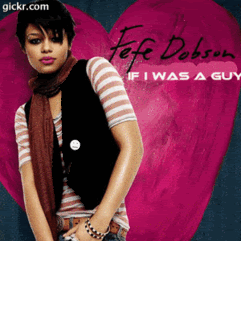






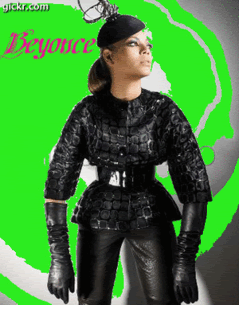































































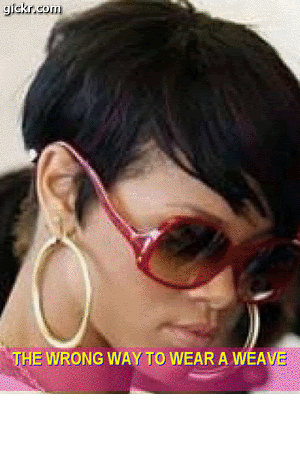

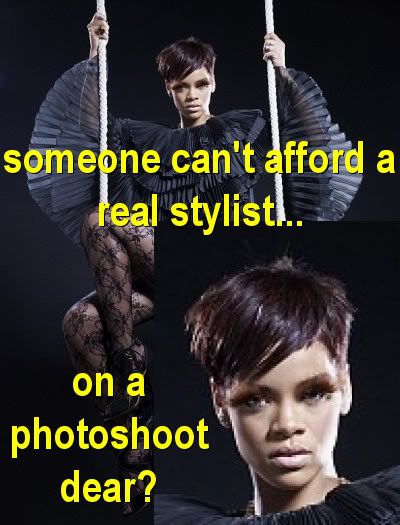




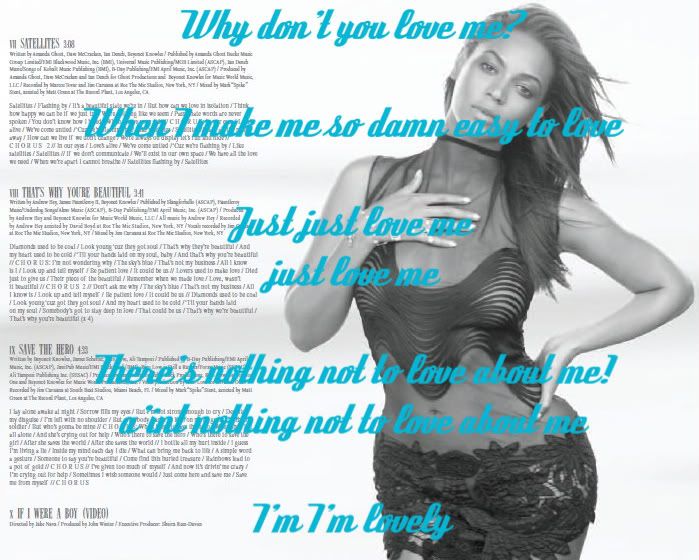


No comments:
Post a Comment
As is implied and emphatically stated, this blog is in regards to the lack of talent and all that is the boring cloned puppet rihanna. If it upsets you...... TOUGH...... jaw juggle some ballz bitchez. :-) feel free to comment